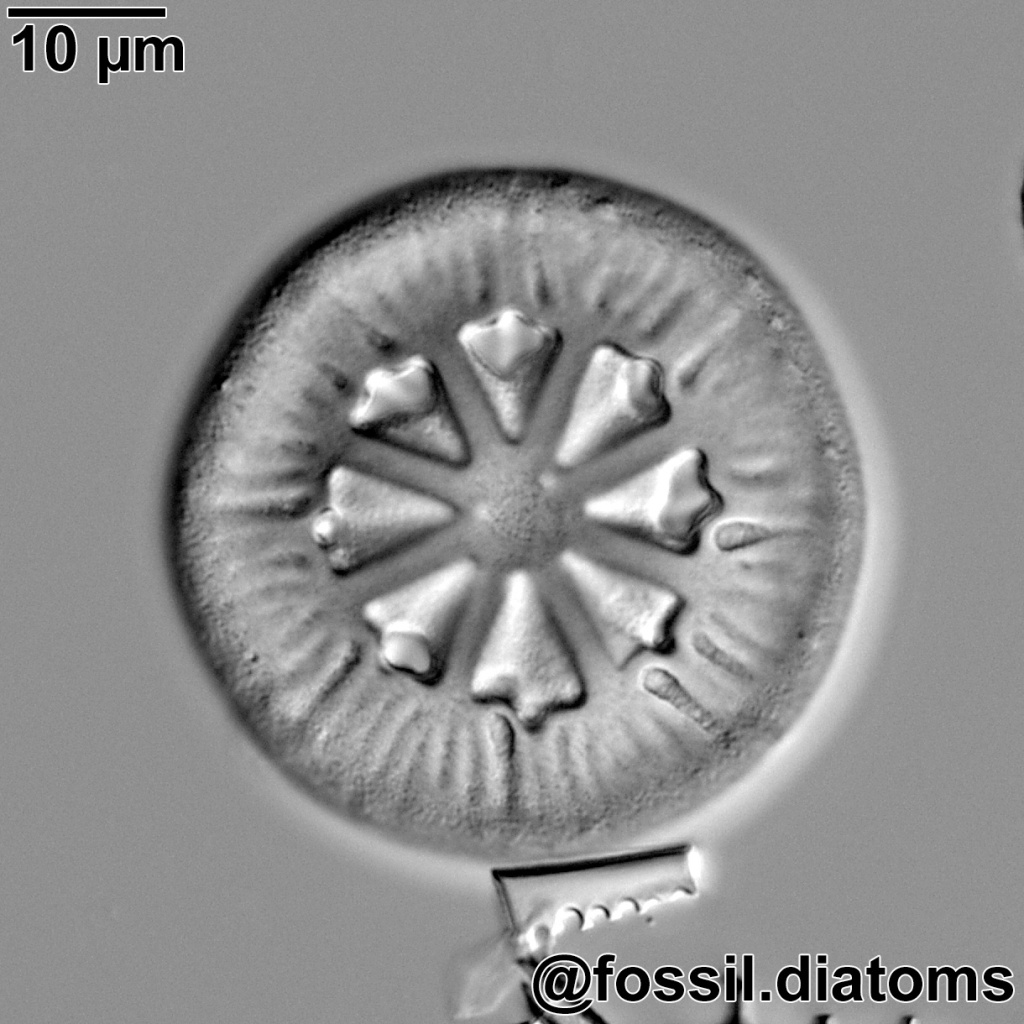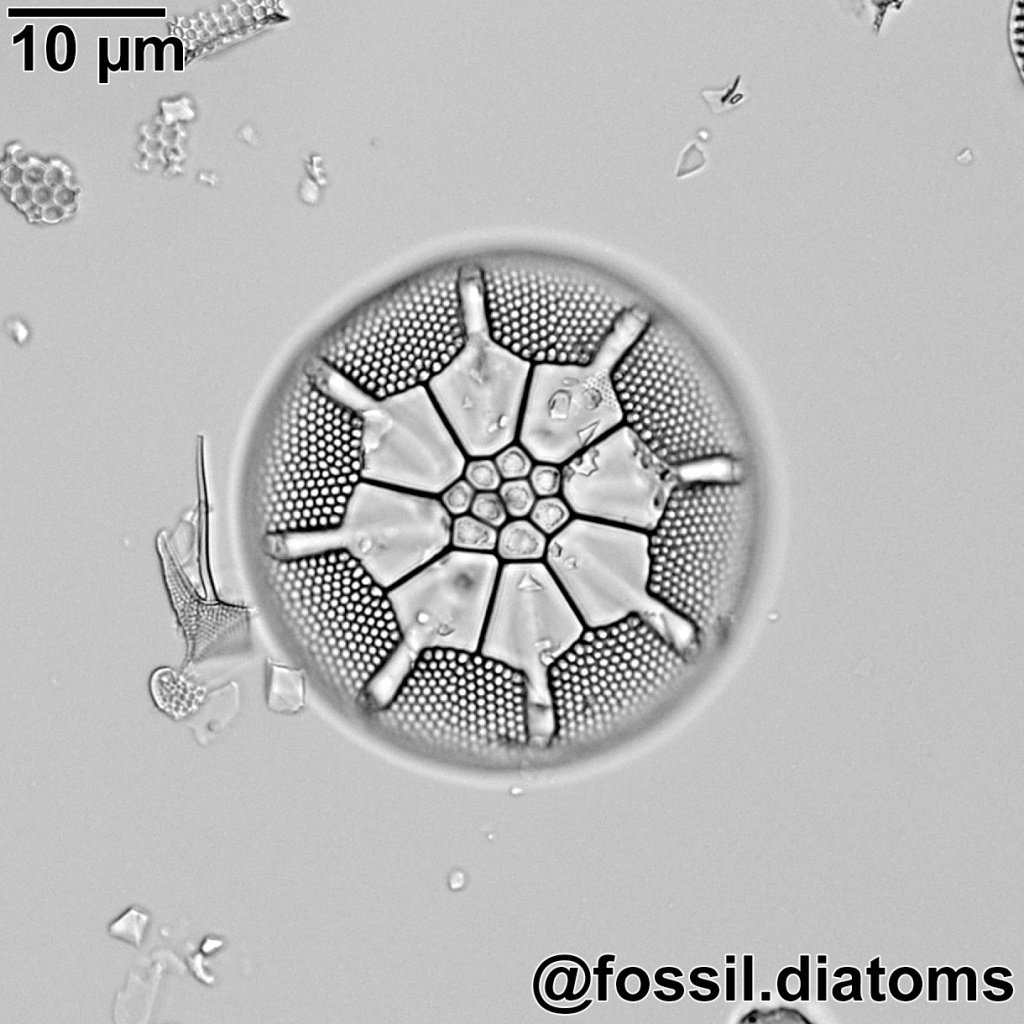
Looking at siliceous microfossil slides made of Eocene deep-sea core materials, you may find a curious circular or polygonal object. It resembles a coin, but usually has some radial features on the circular surface, or surfaces. It lacks the innumerable perforations that you usually see on a diatom valve, and is composed of solid silica.
You’re not the first to find yourself contemplating Liostephania (that’s its scientific name): it’s already been the focus of at least two publications (and mentioned in countless other papers). One – published in 1922 by F.W. Payne, and another from 1970, by G D. Hanna and A.L. Brigger. The paper by Payne can be found online here. Brigger & Hanna (1970) is protected by copyright, but you can find the full reference below, at the end of this short text, and look it up at your library.

Some previous workers have proposed several names for similar structures, but it is convenient to call these collectively Liostephania. Hanna & Brigger (1970) propose a very simple explanation for how Liostephania originate: silica precipitates from waters circulating in sediments, filling voids within diatom frustules, or cavities that result from dissolution of diatoms in sediments. It is very likely many such infillings go unnoticed when we examine samples under microscope. Some, however, are very distinctive because of their radial symmetry. The radial patterns on their surfaces are remarkably similar to the patters found on valves of one of the most distinctive diatom genera: Asterolampra.

Asterolampra is an extant genus with a very rich fossil record. It has a remarkably variable valve morphology, but in general, there may be several central loculi, and a number of hyaline (i.e., not perforated) plates that often continue as hyaline rays toward the valve margin. This may sound simple, but in fact the valve structure of Asterolampra is highly complex, with internal channels, processes, etc. You can find out more on Asterolampra valve morphology in a beautiful paper by Mary Ann Tiffany and David Hernández-Becerril.
As you can see, there is a silver lining to this sad story of diatom valves getting dissolved away and lost forever!
References:
Payne, F.W. (1922): Diatomaceae – Liostephania and its allies. Illustrated by seventy-seven original figures. Privately printed, London.
Hanna, G D. & Brigger, A.L. (1970): Observations on Liostephania – Nova Hedwigia, Beiheft 31, 89-100.
Tiffany, M.A. & Hernández-Becerril, D.U. (2005): Valve development in the diatom family Asterolampraceae H. L Smith 1872 – Micropaleontology 51, 217-258 – available online here.
